Attractions of Ghalegaun
Attractions
Ghalegaun is famous for its breathtaking views of many Himalayan peaks, cool, clean air, local organic foods and wonderful Gurung culture. Come immerse yourself in the views, visit the tea garden, Gurung Museum, temples and landmarks. Experience the lifestyle and food in a local homestay. Enjoy and participate in traditional cultural dances. Wear Gurung traditional dress. Purchase local, organic food and woven handicrafts at the Market. Hike to and visit local villages. Listen and look for over 500 species of birds (in the ACAP region). Join villagers for the hunt and harvest for cliff honey. Enjoy many local holidays and festivals such as Lhosar, Dashain, Tihar and Maghe Sakranti.
Relax and recharge in Ghalegaun.
Visit the Ghalegaun Viewbook to explore things to do in Ghalegaun.
Koibo Dhin
With its trademark blue and white design, Koibo Dhin is a Gurung cultural and study center. Gurung priests, pachyus and ghyabres, perform specific rituals and roles for specific events. The Gurung are traditionally nature worshippers, treasuring streams, forests, the rich soil and air. They maintain a strong cultural identify with many celebrated traditions. Statues of Jhankri (Pachu), Bon Guru, Gyapri and Ghale King Cyalpo are at the Koibo Dhin.
Uttarkanya Temple
Generally, water sources originate in the north and flow to the south. The water at Uttarkanya Temple has always flowed south to north. Therefore, water is worshipped and there is no statue. On the last day of Poush, it is customary to stay awake all night and then to bath in the water and worship with incense before returning home the next morning. There are no sacrifices in the temple, instead pigeons are flown with wishes for world peace. Donating bells and praying for safety has become a tradition with many army members. The Saat Kanya (Seven Wells) is next to the temple where the water is sweet. Many villagers still come to the well to wash.
Ghale Park
Ghale rulers from Kohla Sothar first settled in Ghalegaun. The statue in the park of the last Ghale King, Ghyalpo (Cyalpo) Rajalke is near the ruins of his palace. His Kingdom, 600 to 800 years ago, was spread far and wide. Kwholasothar or Kohla Sothar was an ancient village believed to be Nepal's first Gurung or Tamu settlement, with ruins of an ancient town from 1200 to 1500 years old. Kwholasothar, an historical and archeological site is a pilgrimage for the Tamu (Gurung) people.
Gurung Museum
The SAARC Village Tourism Museum was opened on February 4, 2017 (2073 Mag 22) by Bidhya Devi Bhandari, the President of Nepal. The museum highlights Gurung history and traditions with many artifacts. The items depict daily living and culture of the the Gurung community. Farming equipment, cultural dress, cooking utensils, household items and ornaments are displayed.
Tea Garden
The Annapurna Conservation Area Project (ACAP) started the first Tea Garden in Ghalegaun in 2001 on 200 ropani of land (around 25 acres). The garden is now managed by the village and has grown to 500 ropani (around 63 acres). It is divided among the village wards with each group responsible for maintaining and harvesting the tea. When the tea is harvested, it is evenly divided among the households. There are 3 types of tea plants in the garden and trained community members carefully cultivate plants in a nursery. The last harvest is in late November, bushes are cut back in January/February and tea is ready to harvest again in late April/May.
Saturday Market

Established in 2024, the Market offers local, organic products and handcrafts from Ghalegaun. According to the season and availability, villagers sell freshly picked products in the morning by the bus park. The local tea, nettle, herbs and vegetables have many health and nutritional benefits. Support the local economy and Buy Local! Local Product Names and Uses.
Honey Hunt
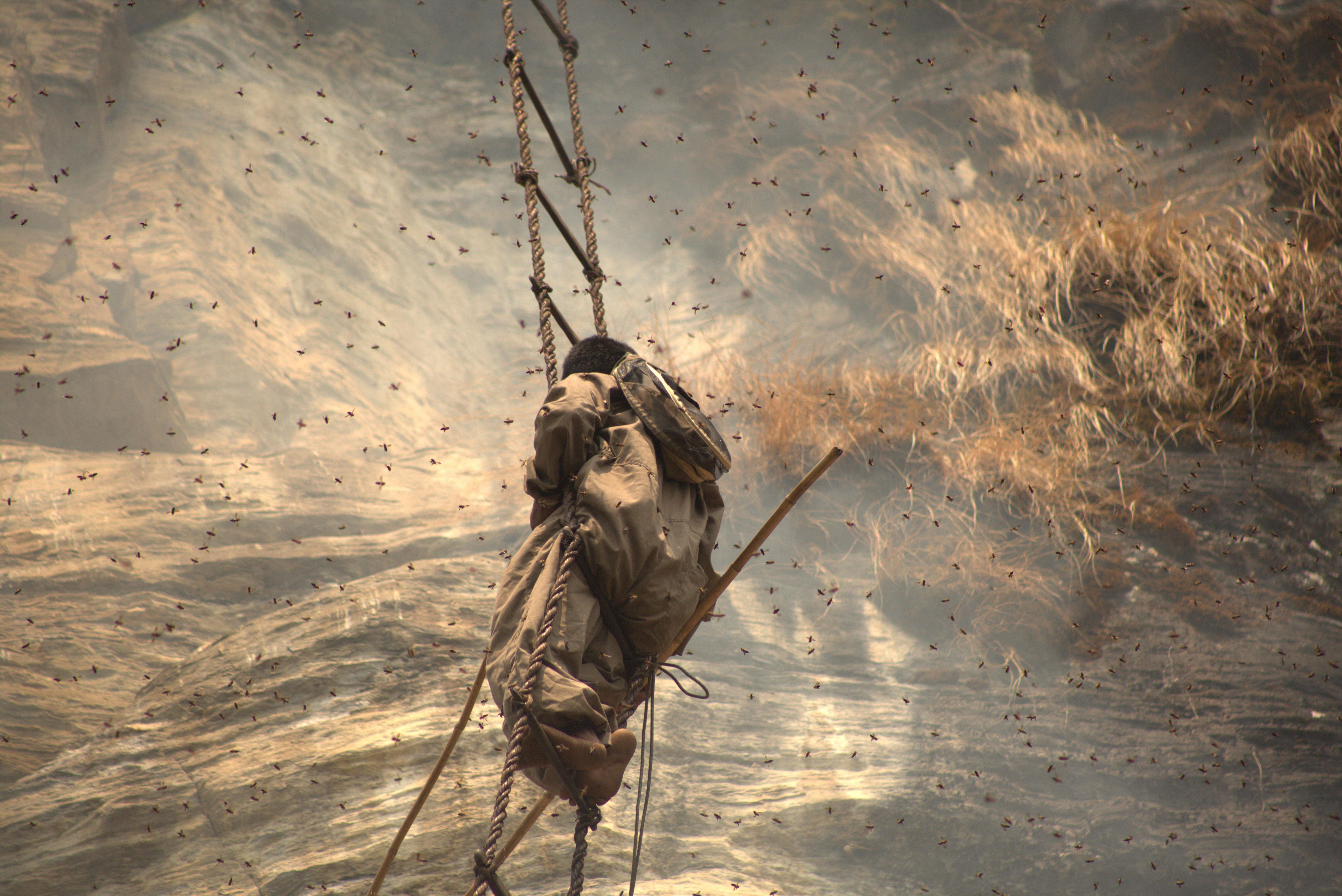
Hunting honey on the steep cliffs surrounding Ghalegaun has been a Gurung tradition for centuries. The Hunt is traditionally done twice a year: in October or November and again in April or May. Gurung priests determine an auspicious date and together villagers prepare the rope ladder and materials needed for the hunt. Prayers are performed prior to the hunt. Harvesting this honey, when available, is an important cultural tradition and source of income. The location and amount of honey varies year to year.The Himalayan giant honey bee (Apis laboriosa) is the world’s largest honey bee, an adult can grow up to an inch and a half long, and is highly adapted for nesting in giant combs on the overhangs of cliffs.
Morning Yoga
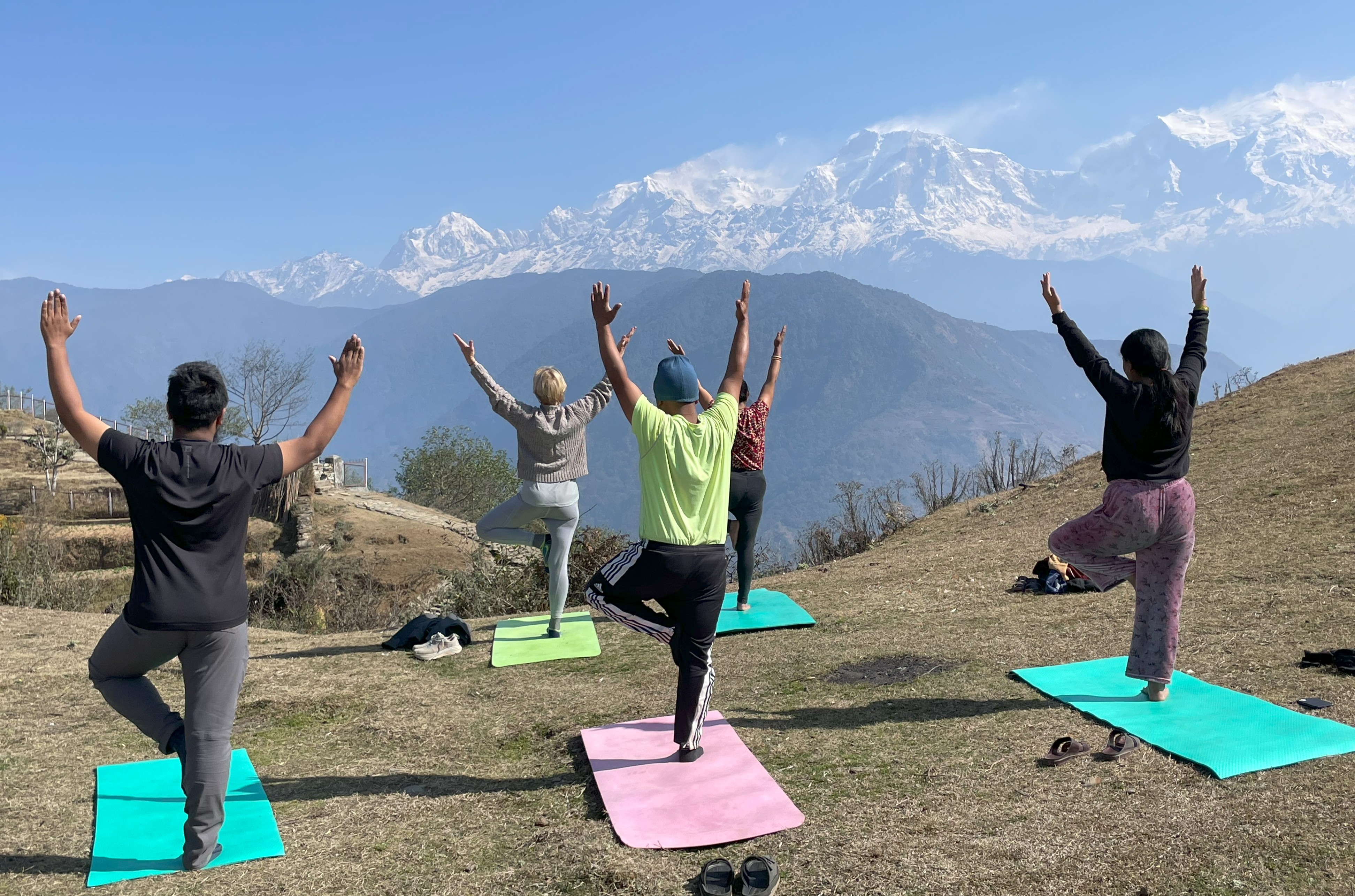
Join community members in morning, outdoor yoga classes. Rejuvenate your body and mind. Mats are available.
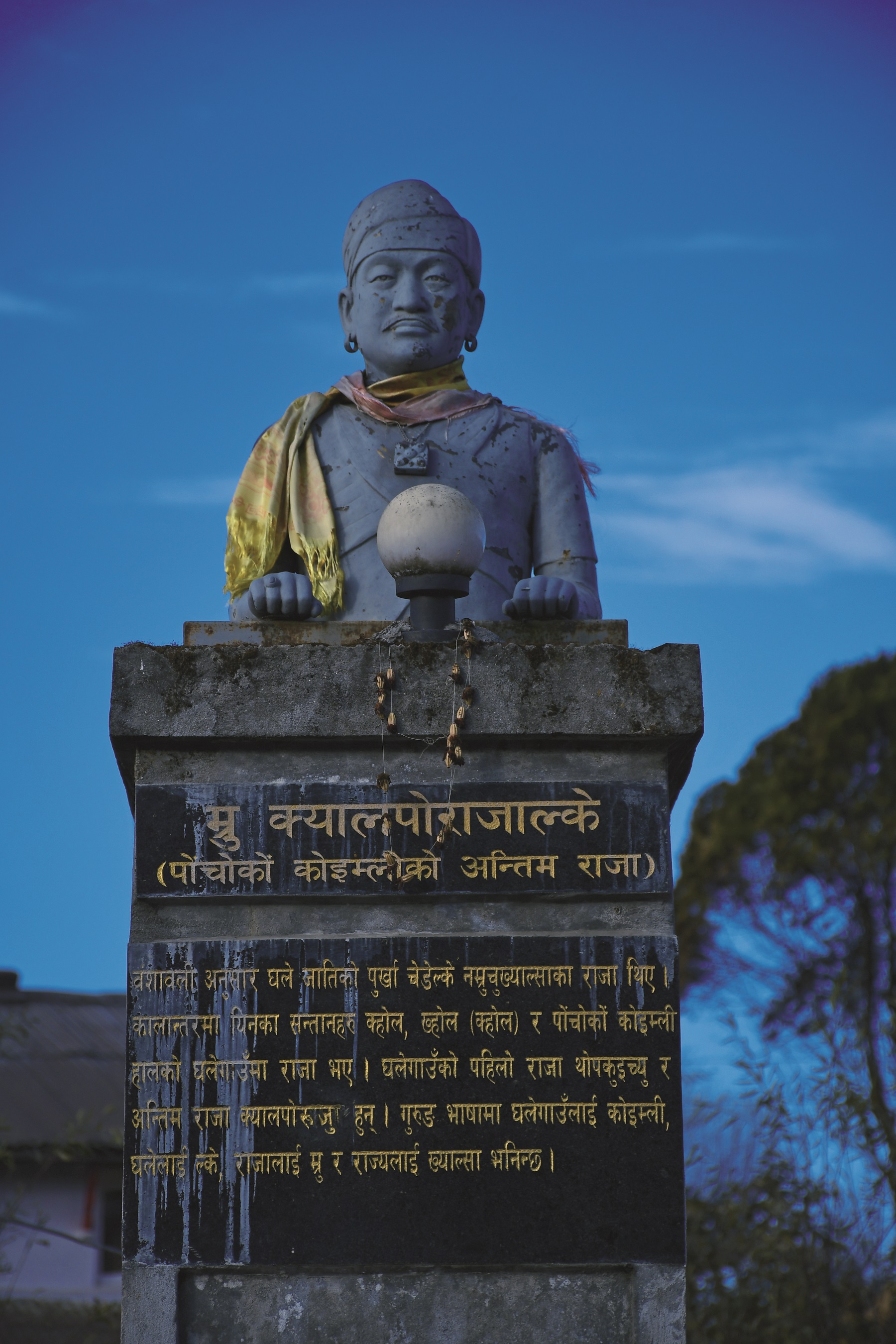
Koibo Dhin
The Gurung community is nature worshippers. They worship streams, forests, soil and air. They have their own culture and traditions. Pachu, Bonpo lama and Ghyapri are their preists. Koino Dhin lie on one of the sides of Ghalegaun. There are statues of Jhankri (Pachu), Bon Guru, Gyapri and Ghale king Cyalpo.
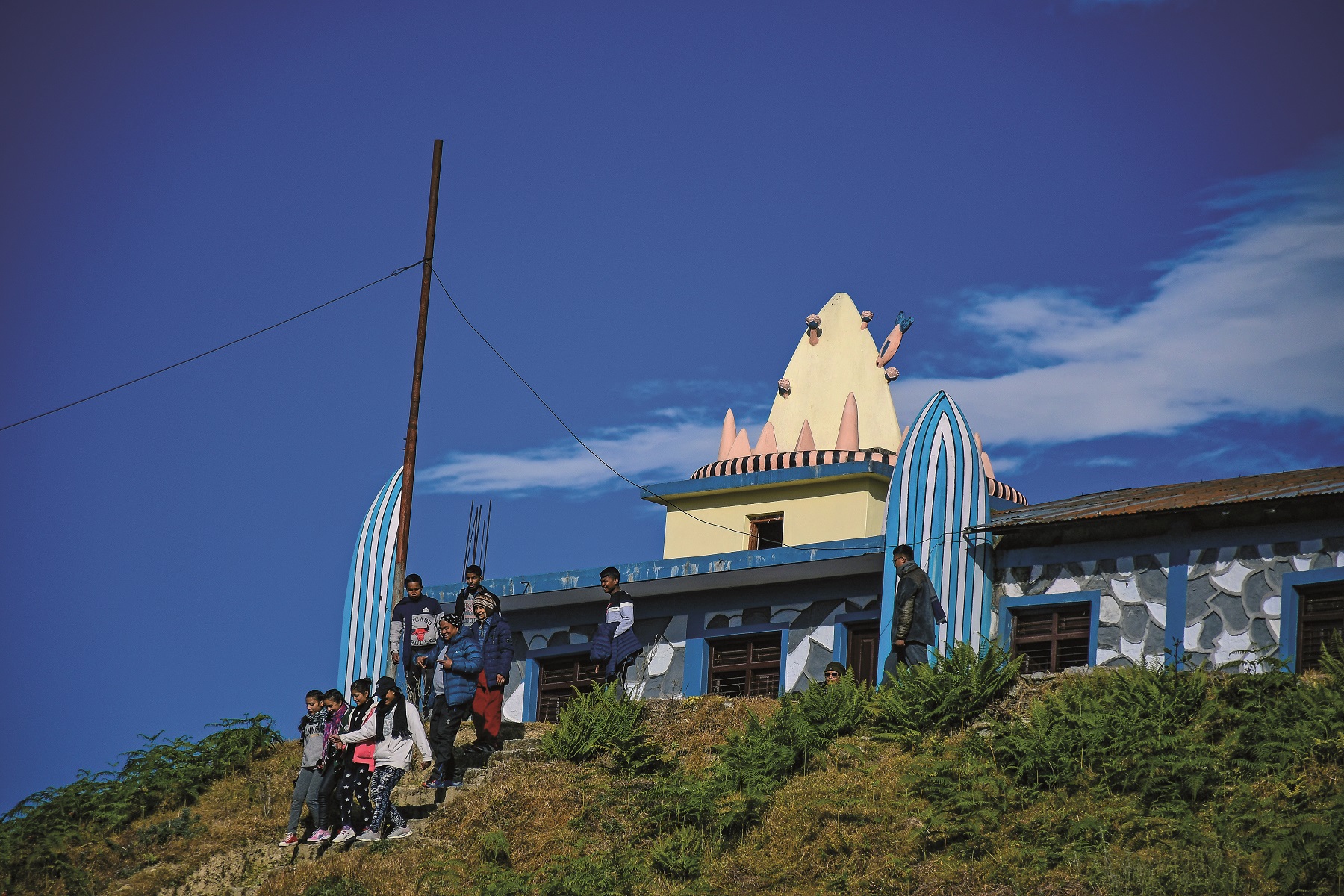
Uttarkanya Temple
Most of the time the water sources burst from the north and flows in the other direction. In the uttarkanya temple of Ghalegaun., water has always flowed from the south to the north. There is no statue in the Temple. The source of water is worshipped as a goddess.On the last of the month of Poush, it is customary to stay awake all night and on the morning of the next day, bath in the same source of water and worship with incense and other aromas before returning to home. Sacrifice is not offered in the temple. Instead, pigeons are flown wishing for world peace. Donating bells have become a custom. Many armies, recruit donates bells wishing for safety.There is saat kanya well near the temple. The water from the seven wells there is sweet. The villagers used to during water from there. Currently, there is a drinking water supply in the village.
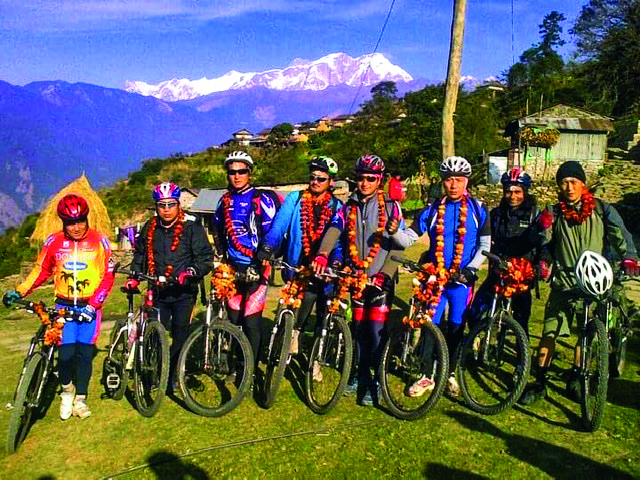
Ghale park.
Ghalegaun has a history of being ruled by Ghale king. According to the genealogy, the ancestor of the ghale caste, Chedelke, was the king of Namruchyukhyalsa. In time, his descendants begacme kings of ht khonl,khyhol and koimilinasa of pochon. The first king of the Ghalegaun was Thopkuichu and the last king was cyalporejakle. In Gurung language, Ghalegaun is called 'koimli', Ghale is called 'lke', Raja is called 'Mru' and kingdom is clled 'Khyalsa'. Ghale park has been built in Ghalegaun with tha statue of the last king cyalpo.
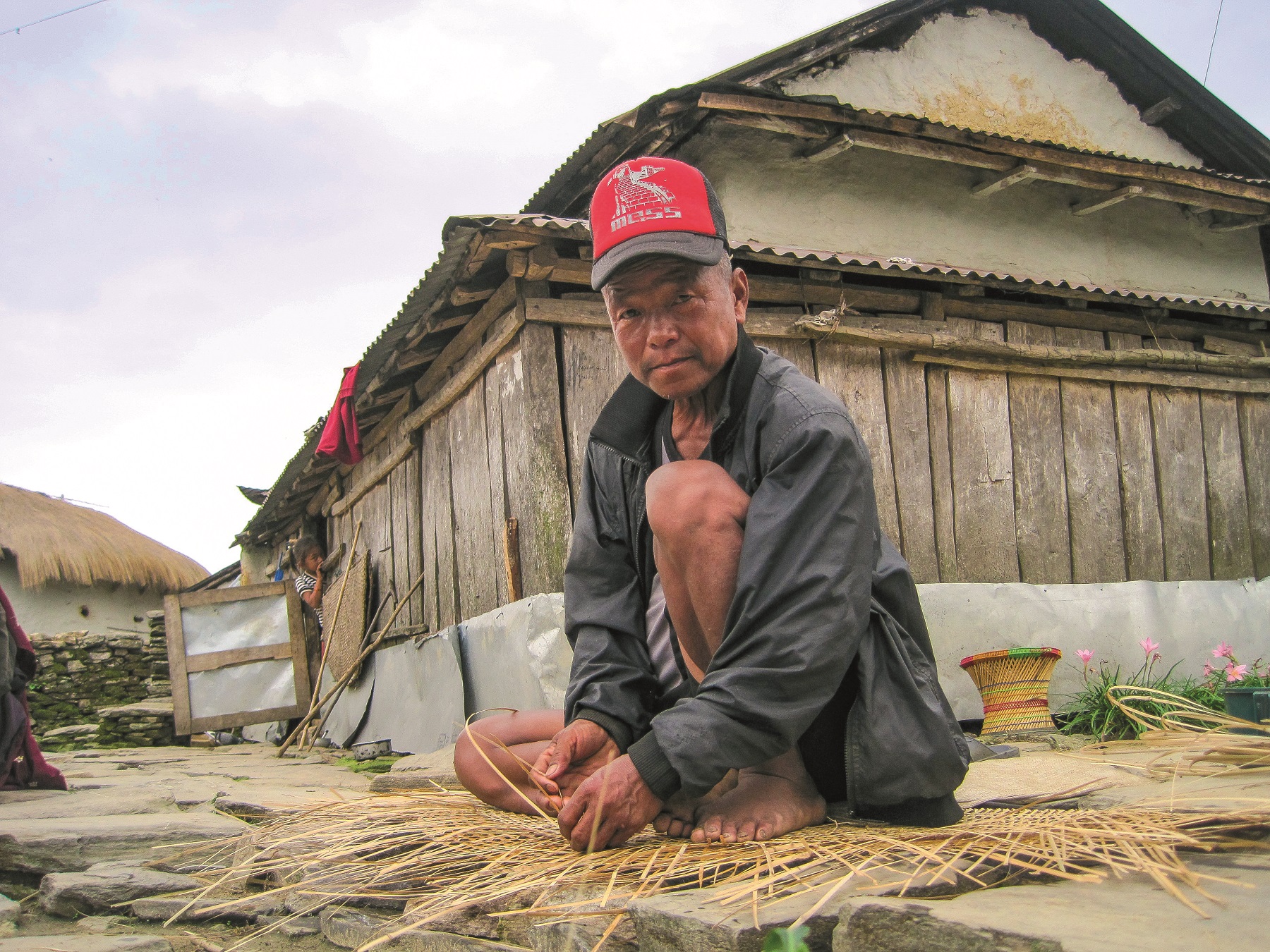
Gurung Measum
There is a SAARC village model museum in the village where materials pictures and paintings, reflection the Gurung community from birth to death are decorated. Equipment for agriculture like kuto, kodalo equipment that are used in jungle, cultural attire and ornaments can be found in the museum. Similarly, kitchen utensils and other items can be observed.